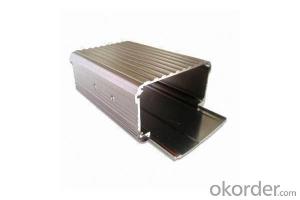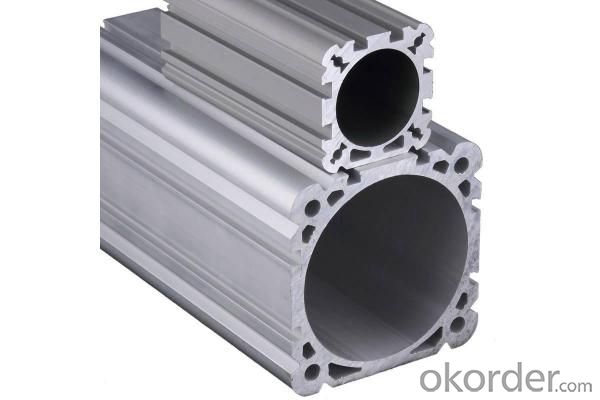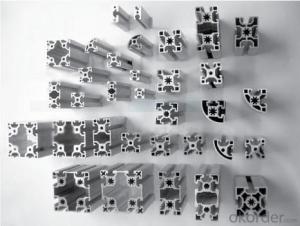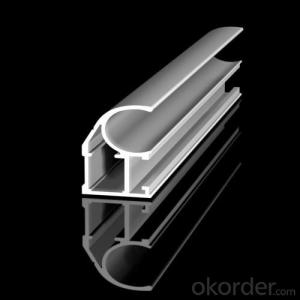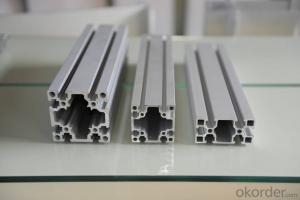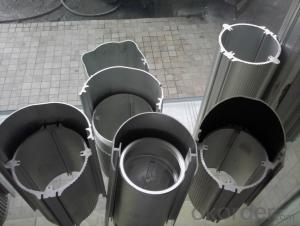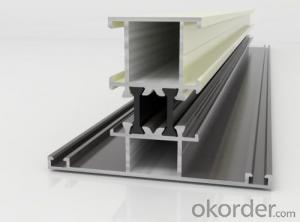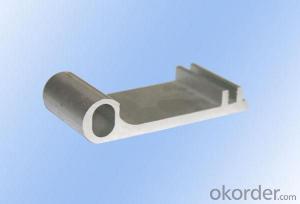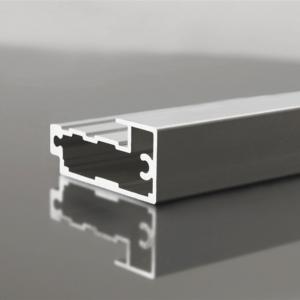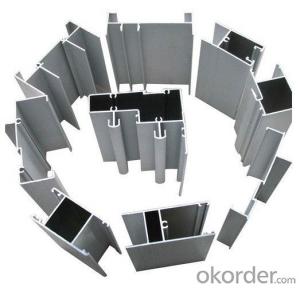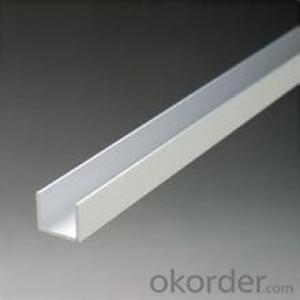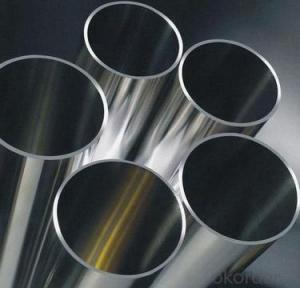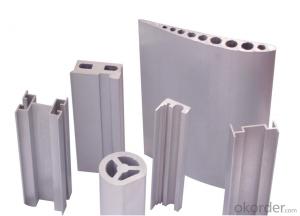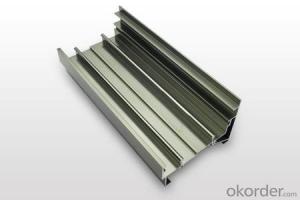Aluminum Moulding Profiles for Sliding Windows and Doors - Aluminum Alloy Profiles Made in China
- Loading Port:
- Shanghai
- Payment Terms:
- TT OR LC
- Min Order Qty:
- 5 m.t.
- Supply Capability:
- 10000 m.t./month
OKorder Service Pledge
OKorder Financial Service
You Might Also Like
Specification
1. Specification of Aluminum Alloy Profile Sliding Windows and Doors Made in China
Alloy | AA1050,AA1060, AA1070, AA1100 |
Temper: | H12, H14, H16, H18, H22, H24, H26, H32,HO, F |
Thickness: | 0.10-500mm |
Width: | 10mm- 2200mm |
Standard: | GB/T3880-2006, ASTM, ISO, EU standard |
Special Specification is available on customer’s requirement | |
2. Application of Aluminum Alloy Profile Sliding Windows and Doors Made in China
wall cladding, ceilings, bathrooms, kitchens and balconies, shutters, doors,windows…
3. Feature of Aluminum Alloy Profile Sliding Windows and Doors Made in China
Surface Quality :
Be free from Oil Stain, Dent, Inclusion, Scratches, Stain, Oxide Decoration, Breaks, Corrosion, Roll Marks, Dirt Streaks and other defect which will interfere with use,
Mochenical Property:
Chemical Composite and Mechanical Property
4. Certificate:
SGS and ROHS(if client request, paid by client), MTC(plant provided), Certificate of Origin(FORM A, FORM E, CO), Bureau Veritas and SGS (if client request, paid by client), CIQS certificate
5. Image of Aluminum Alloy Profile Sliding Windows and Doors Made in China
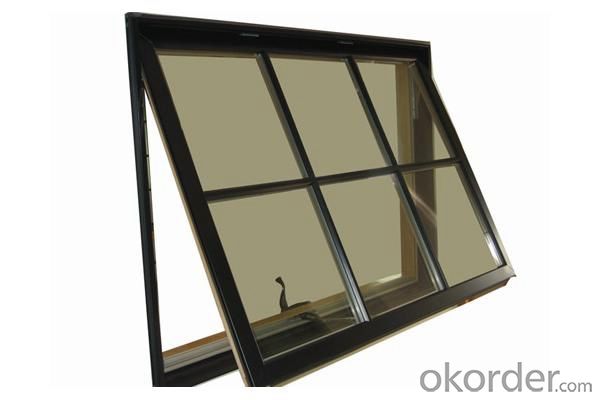

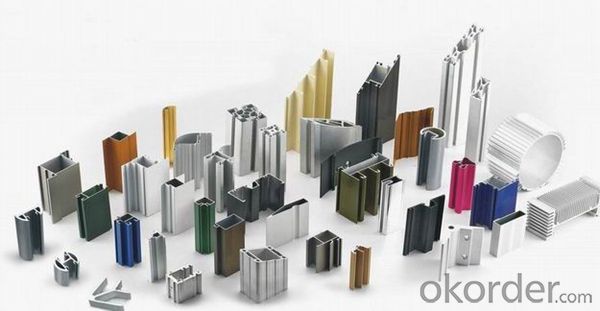
6. Package and shipping of Aluminum Alloy Profile Sliding Windows and Doors Made in China
First, plastic cloth with drying agent inside; Second, Pearl Wool; Third, wooden cases with dry agent, fumigation wooden pallets, aluminum surface could cover blue PVC film
7. FAQ
Question 1: What is your MOQ?
We accept one ton per type for an order. But the detail we could negotiate.
Question 2: What is your normal terms of payment?
We always trade with you by T/T. But we also accept the L/C as you require.
Question 3: How many kinds of the surface treatment we can choose?
You could choose different color of powder coated. Anodized of black. matte silver, nature, champagne, bronze color. Mill finished. Wooden finished and printed.etc.
Question 4: Can you supply OEM services?
We offer OEM services for 17 years.
Question 5: How many days for opening the mould?
Normally about 10 days.According to the difficulty of your drawing.
Question 6: Can i choose the package what i want?
Yes, of course. We offer various kinds of package.e.g.PE foam. Shrink film. Wrapping paper.
But we would give you professional suggestion of package.
- Q: Are there any regulations or standards that aluminum profiles must meet?
- To ensure the quality and safety of aluminum profiles, they must adhere to various regulations and standards. The specific requirements vary depending on the application and industry. Here are some commonly followed regulations and standards: 1. ISO Standards: The International Organization for Standardization (ISO) has established several standards for aluminum profiles. These include ISO 9001 for quality management systems, ISO 14001 for environmental management systems, and ISO 9001 for occupational health and safety management systems. 2. ASTM International Standards: ASTM International provides standards for aluminum profiles used in construction, transportation, and other industries. These standards specify the chemical composition, mechanical properties, and dimensional tolerances that aluminum profiles must meet. 3. American National Standards Institute (ANSI) Standards: ANSI develops standards for aluminum profiles used in various applications. These standards address design, performance, and safety requirements. 4. European Standards (EN): In Europe, aluminum profiles must meet the criteria set by the European Committee for Standardization (CEN). These standards define the characteristics, dimensions, and tolerances of aluminum profiles used in construction, aerospace, automotive, and other industries. 5. National Regulations: Many countries have their own regulations governing the use of aluminum profiles. These regulations cover aspects such as fire safety, structural integrity, and environmental impact. Manufacturers, suppliers, and users of aluminum profiles must comply with these regulations and standards to ensure the quality, reliability, and safety of their products and applications. Adhering to these standards helps maintain consistency, interoperability, and customer confidence across various industries that use aluminum profiles.
- Q: A curtain wall predecessors?For example, under the transverse frame section, with 6m specifications, why should the material processing and minus 50mm? Insert plate, plate to cut 100mm head? What is the law?
- The column beam rod in the visual profile factory when surface treatment to hang up or put the spraying profile in oxidation tank, in sections at each end of the play of a hole, so that the hook, in the cutting process, in order to avoid the holes will be seen after the installation and so on when will the cutting part of the section cut ends, this is to cause less 50mm.
- Q: Surface treatment method of aluminium profile
- A white spot may be corrosive,It doesn't work.
- Q: This question asks about the various applications of aluminum extrusions within the automotive manufacturing industry.
- <p>Aluminum extrusions are widely used in automotive manufacturing due to their lightweight, high strength, and corrosion resistance. They are utilized in several areas: 1) Structural components such as chassis, frames, and body parts to reduce vehicle weight and improve fuel efficiency. 2) Engine components to enhance engine performance and durability. 3) Heat exchangers and radiators for effective cooling systems. 4) Crash management systems to absorb impact during collisions. 5) Interior components like dashboards and door panels for lightweight and aesthetic appeal. 6) Electrical components such as battery casings and wiring harnesses. 7) Wheels and suspension components for improved handling and reduced unsprung weight. These applications contribute to the overall performance, safety, and efficiency of vehicles.</p>
- Q: Can aluminum profiles be used for furniture?
- Yes, aluminum profiles can be used for furniture. Aluminum is a lightweight, durable, and corrosion-resistant material, making it suitable for various furniture applications such as tables, chairs, and frames. It offers versatility in design, allowing for sleek and modern aesthetics. Additionally, aluminum profiles can be easily customized and are available in different finishes, making them a popular choice in the furniture industry.
- Q: Are aluminum profiles suitable for cleanroom applications?
- Yes, aluminum profiles are highly suitable for cleanroom applications. Aluminum is a non-corrosive and lightweight material that is easy to clean and maintain. It offers excellent strength and structural stability, making it ideal for constructing cleanroom walls, partitions, and equipment. Additionally, aluminum profiles can be easily customized and integrated with cleanroom components such as doors, windows, and ceiling grids. Overall, aluminum profiles provide the necessary properties to meet the stringent requirements of cleanroom environments.
- Q: This question asks about the methods to ensure that aluminum profiles used in construction meet safety standards.
- <p>To ensure that aluminum profiles used in building construction meet safety standards, you should follow these steps: 1) Source from reputable suppliers who adhere to industry standards. 2) Check for certifications such as ISO 9001 for quality management. 3) Verify the aluminum's grade and alloy type to ensure it's suitable for construction use. 4) Conduct regular inspections and tests, including tensile strength and load-bearing capacity tests. 5) Adhere to local building codes and regulations. 6) Use profiles with appropriate thickness and dimensions for the intended application. 7) Consult with engineers or architects to ensure proper design and installation. 8) Keep records of all tests and inspections for future reference and compliance checks.</p>
- Q: Are aluminum profiles suitable for use in the marine industry?
- Aluminum profiles are indeed appropriate for utilization within the marine industry due to a multitude of reasons. Firstly, aluminum possesses numerous qualities that render it an exceptional material for marine applications. Primarily, aluminum exhibits a lightweight yet robust nature, which proves vital in the construction of boats and other marine vessels. Its lightweight composition enables enhanced speeds and superior fuel efficiency. Furthermore, aluminum showcases an impressive resistance to corrosion, thus making it an ideal candidate for enduring the harsh and corrosive marine environment. This particular attribute obviates the necessity for frequent maintenance and augments the lifespan of marine structures. Moreover, aluminum boasts exceptional thermal conductivity, facilitating prompt heat dissipation and diminishing the risk of overheating in marine engines. Lastly, aluminum is highly malleable and can be effortlessly molded into diverse shapes and profiles, granting versatility in both design and construction. In conclusion, employing aluminum profiles within the marine industry guarantees a combination of strength, durability, corrosion resistance, and lightweight properties, thereby establishing it as a suitable choice for marine applications.
- Q: Can aluminum profiles be used in the construction of greenhouses?
- Yes, aluminum profiles can be used in the construction of greenhouses. Aluminum is a popular choice for greenhouse framing due to its durability, lightweight nature, and resistance to corrosion. It offers structural strength while allowing for maximum light transmission, which is essential for plant growth. Additionally, aluminum profiles are easy to assemble and maintain, making them an ideal material for constructing greenhouses.
- Q: How do you prevent galling or seizing with aluminum profiles?
- To prevent galling or seizing with aluminum profiles, there are a few measures you can take: 1. Lubrication: Apply a suitable lubricant to the contact surfaces of the aluminum profiles. This reduces friction and heat generation, which helps prevent galling or seizing. Choose a lubricant specifically designed for aluminum to avoid any adverse reactions. 2. Surface treatment: Implement surface treatments such as anodizing or applying a protective coating to the aluminum profiles. These treatments create a barrier between the profiles, reducing direct metal-to-metal contact and minimizing the chances of galling or seizing. 3. Proper design and materials: Ensure the design of the profiles and their mating components allows for sufficient clearance and proper fit. Avoid tight tolerances that can lead to excessive contact pressure, increasing the likelihood of galling. Additionally, select materials with compatible hardness and avoid using dissimilar metals that can lead to galvanic corrosion. 4. Cleanliness: Keep the aluminum profiles and their mating surfaces clean and free from dirt, debris, or contaminants. Any foreign particles can increase friction and contribute to galling or seizing. 5. Regular maintenance: Implement a preventive maintenance program that includes periodic inspection, cleaning, and lubrication of the aluminum profiles. This helps identify any issues early on and ensures continued smooth operation. By following these preventive measures, you can minimize the risk of galling or seizing in aluminum profiles, ensuring their longevity and optimal performance.
Send your message to us
Aluminum Moulding Profiles for Sliding Windows and Doors - Aluminum Alloy Profiles Made in China
- Loading Port:
- Shanghai
- Payment Terms:
- TT OR LC
- Min Order Qty:
- 5 m.t.
- Supply Capability:
- 10000 m.t./month
OKorder Service Pledge
OKorder Financial Service
Similar products
Hot products
Hot Searches
Related keywords
